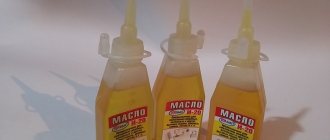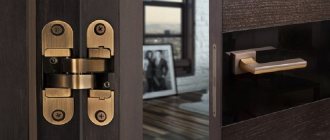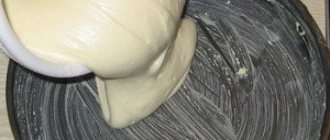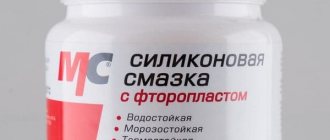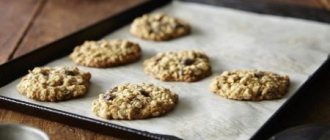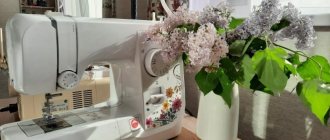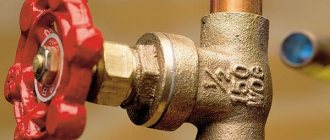How to properly use a sewing machine
In addition to the basic rules for working with fabrics, needles and threads, described in the instructions for each sewing machine model, it is necessary to regularly clean and lubricate the complex mechanism.
Care can be divided into:
- independent – carried out at least once a month during active use;
- professional - it is recommended to do it once every 2-3 years in a repair shop.
Proper storage of the device is also considered an important criterion for the safety of metal components if it is rarely used.
Professional help
The listed service operations can be performed independently, at home. However, experts recommend periodically contacting authorized service centers, where professional cleaning and lubrication is possible.
This is true for sewing machines that are used regularly. For example, if a housewife sews things to order, or dresses the whole family, creates unique outfits. In such situations, you need to take the device to professionals once every 6 months.
Yes, sometimes this service is quite expensive, but it will help keep the machine working for many years and eliminate the need for complex repairs or the purchase of new equipment.
Self care
It is necessary to prepare specialized oil for lubricating sewing machines (it is made on a kerosene basis, so it penetrates perfectly into all components), a small screwdriver (Phillips or flat-head), a brush to collect dust or fiber residues, a soft piece of fabric for small debris and old technical oil.
Sequence for vertical shuttle
- Remove the bobbin case, remove the latches, remove the retaining ring and the hook base.
- Clean all the grooves, as well as the carriage, with a brush, then remove any remaining old grease with a soft cloth.
- Drip oil onto the landing stage, under the pusher, onto the edge of the shuttle itself.
- Insert the hook, apply oil to the top of the housing before placing the retaining ring.
- Be sure to lubricate the spool holder axle. You can then close the latches and place the bobbin case in place.
- After lubrication, it is necessary to make several revolutions with the flywheel.
Horizontal hook lubrication
Despite the assurances of some sellers that horizontal structures do not require maintenance, professional sewing machine technicians consider lubrication mandatory.
Steps:
- Remove the protective window and needle plate.
- Take out the bobbin insert, clean all surfaces with a brush, and use a cloth to remove any remaining oil from the step where the hook mesh comes into contact with the bobbin holder.
- Fresh oil drips onto the metal landing stage and also into the center of the bearing.
- When assembling the bobbin insert, you need to check the correct fit. When the wheel moves, it must remain in place. Next, the needle plate is installed (secured with screws).
Cleaning the needle bar
Access to the needle movement mechanism can be provided by opening the cover on the top of the case (horizontal shuttles) or by unscrewing the screw and removing the panel on more budget models.
The importance of lubricating the needle bar is justified by the fact that dry movement of the mechanism can create backlash, loosen the needle and lead to poor stitch quality.
The needle bar is lubricated along its entire length, capturing the bushings and fasteners. Afterwards, you need to spin the flywheel to see which connecting rods provide its movement. They also need to be cleaned of debris, followed by application of lubricant.
Lubricate the parts in the shuttle compartment (lower part)
To do this, unscrew and carefully remove the needle plate, making sure that the needle is raised (or removed).
Using a dry, clean cloth, immediately wipe the entire surface of the needle plate. We take out the bobbin holder part and clean it with a brush. We also use a brush to go over the shuttle part and other elements around it.
Here, using a disposable syringe or bottle, drop just one drop of oil into the very center of the shuttle (no more). The drop will be evenly distributed, all parts of the shuttle compartment will be evenly lubricated.
You can also apply oil to the rim of the shuttle (also no more than 1 drop), but this is no longer necessary. All sewing parts should be moderately lubricated so that the liquid does not drain. Next, insert the bobbin holder back into the shuttle so that the lever is positioned next to the stopper in the shuttle. This completes the lubrication of the shuttle compartment; all that remains is to close it with a plate and secure it tightly.
Cleaning and lubricating your Janome sewing machine
Let's look at the process of disassembling, cleaning parts from dust accumulations and lubricating a Janome home sewing machine.
What you need for work
To carry out the procedure, you will need to stock up on a certain set of tools and materials.
- Use a lint-free cloth; any cotton rag will work just fine.
- Brush with hard bristles. Usually a toothbrush is used for these purposes, but art brushes also do an excellent job.
- Oil for sewing machines.
- WD-40, you can ask at car stores. This is a special substance with which the moving part of any mechanism is usually lubricated. It is sold in aerosol form.
How to lubricate a home sewing machine in hard-to-reach places? Professionals usually use a 5 ml disposable syringe, which can be purchased at any pharmacy. Its needle allows you to penetrate into the smallest holes and dispense oil.
Step-by-step algorithm
Let's proceed directly to the procedure.
- Unplug the device from the outlet and remove the needle from the mount - this will protect you from accidental injuries while working. After this, look for the screw on the front of the case; it is usually hidden under a decorative plug.
- Remove the plug and unscrew the screw using a screwdriver. Then you need to unscrew the fastening screws from the bar of the rack and pinion mechanism that performs the function of moving matter. The released plate must be pulled out and the space under it properly cleaned.
- The next step involves some hard work. It is necessary to remove dust from all connections that you can safely reach. Remove any old home sewing machine oil and apply a new coat. Carefully distribute the substance using an oil can. Two drops of oil will be enough for each connection. Blot the excess that flows down with a cloth and erase all traces left behind. To ensure even distribution of lubricants, rotate the drive wheel slowly.
- The next step is to release the shuttle fastening mechanisms and carefully pull it out of the socket. The operation is completely done manually; you will not need additional tools.
- Apply the required amount of lubricant to the roller. This part must rotate well so as not to interfere with the movements of the shuttle. Also carefully process the shaft attachment points. Some models may have felt and felt pads there, don’t be surprised and don’t rush to pull them out. These parts are designed to absorb any sewing machine oil that has leaked out of the unit.
- Check the functionality of the shuttle mechanism fastening clamps. They should move easily, not jam or create obstacles.
- Like the previous units, the carriage and the plate that secures it require your attention. Simply pull the part out and clean off the old oil and dust. After this, the carriage is lubricated with a thin layer of fresh lubricant and put in place.
- Underneath the fabric guide plate is usually where most of the dirt and dust accumulates. It gets there along with a piece of material that passes through the foot with the needle. Use a toothbrush and thoroughly clean out any debris that has accumulated while working. Pay special attention to rubbing parts - you must wipe off old deposits from them. How to lubricate our sewing machine in this place? Using a special oiler or syringe. In this segment, you need to be even more careful, because oil that has leaked into the wrong place will definitely end up on the threads, and then on the fabric of the product.
- Don't neglect the shuttle either. Thoroughly clean all its elements from dust. A dry, hard bristled paint brush can help with this. Do not use a damp cloth or wipes with cleaning solution as this may damage sensitive parts.
A substance called WD-40 will serve you well in all this work. It perfectly removes old sewing machine oil and dust accumulated in the joints of mechanisms.
The procedure for cleaning a sewing machine can take quite a long time. If you are not ready to spend it or are not confident in your skills, it is better to call a specialist. Errors during assembly and disassembly, as well as careless handling of small parts can lead to problems in the future.
Where to lubricate: instructions
Before work, remove all threads and remove the needle to avoid injury. Don't forget to unplug the device. For lubrication you will need a small piece of soft cloth (without lint) and a dust brush. If these tools were not included, use a toothbrush and a piece of cotton cloth.
- Remove the panel under which the sewing machine mechanism is hidden. Try not to confuse the bolts, arrange them in the right order.
- Remove dust and debris from the threads using a lint-free cloth or a stiff-bristled brush. All parts need to be cleaned.
- Next, lubricate all moving metal parts. Find the rod that moves while the machine is running. Apply a couple of drops of oil - for convenience, use a small pharmacy syringe. Its needle will allow you to accurately dose the lubricant. To ensure that the substance is evenly distributed throughout the mechanism, slowly rotate the flywheel. In some machines, places for a drop of oil are indicated by a round hole.
- All that remains is to clean the shuttle compartment and lubricate the roller to stabilize the movements of the mechanism.
We recommend: Quickly sew a fabric Christmas tree for the New Year - with my pattern it’s easy even for a novice needlewoman
Miss Clean magazine recommends measuring the amount of oil for lubrication. More doesn't mean better. Always remove excess with a clean cloth. If you overfill the oil, it will eventually mix with dust, fibers of fabrics and threads, and turn into dirt that is difficult to wash off.
Look for the lubrication diagram in the machine manual. The designs of Podolsk, Juki, Toyota, Jaguar, Veritas devices may have certain features. If the instructions are lost, then don’t worry: everything that needs care is intuitively clear. As a last resort, call a professional.
Lubrication Features
The biggest mistake is the idea that sewing machine oil needs to be applied in large quantities. In this situation, more does not mean better. During use, an impressive layer of dust accumulates on the internal parts of the device, which gets there along with the fabric. Over time, this may cause problems with the advancement of the canvas. In addition, deposits of dirt on moving elements create a serious load on the device drive. An excessive amount of oil, applied by the generous hand of an ignorant owner, accumulates tiny pieces of matter, scraps of thread, and dust. Falling into lumps, this mass accumulates in one place, causing problems with the sewing machine.
What not to do.
Remember!
- Some “thrifty” owners try to use other household oils or “centuries-old reserves” as sewing machine oil. In this case, know that, for example, sunflower oil only gives good results at first, and then dries and sticks together the moving parts of the machine. With old oil that has become dark and cloudy, approximately the same thing happens.
- Never apply oil to a dirty car! Before lubrication, parts must be cleaned of production residues - dust, pieces of thread, etc., as well as previous lubricants (especially if you purchased a new oil that is different from the previous one).
How to choose a lubricant oil
Sewing machine oil has a viscosity index. By using too thick, you risk not lubricating the internal parts of the mechanisms, which account for the main friction. Taking a more fluid one, you can again be left with nothing, because it will simply flow down, and the mechanisms again will not receive lubricant. Lubricant for the average household sewing machine should have a medium viscosity. Usually this indicator is indicated directly on the label. It is worth noting that oil for industrial sewing machines is sometimes not needed at all: high-quality professional units are equipped with an automatic lubrication system.
Which oil is the best? The one that comes with the machine. If it was not there initially, then choose a special lubricant of only the best quality. Its cost can start from 100 rubles and more. It can be sold with a special oiler and in a simple plastic bottle.
Don’t even think about using car or vegetable oil - this is strictly prohibited, as it has a detrimental effect on the functioning of the entire system.
Experts do not recommend saving in this matter. Cheap oil may smell unpleasant, dry out quickly, or clump together. It is not recommended to store this oil for a long time after opening. You can use it only if nothing else is at hand.
Properties of oils
The price of oil for sewing machines also depends on the properties and degree of purification. Of course, the cleaner and more transparent the oil, the better it is: it does not stick parts together and does not leave stains on the fabric. In addition to purity, lubricating oil may have the following properties:
- Viscosity. This is a value indicating how strong the oil film will be on the lubricated parts. The optimal viscosity index for sewing equipment is 18-20. As a rule, for high-speed machines, oil is taken with a higher viscosity.
- Pour point. At low temperatures, the oil loses its mobility. If your cars are constantly in a well-heated room, then this is not a threat to you.
- Anti-oxidative properties - the ability not to deteriorate under external influences, that is, a shorter or longer service life.
- Cleaning properties - the ability to prevent dust from adhering.
- Additive content. Additives are additives that improve the properties of the oil (for example, so that it does not foam).
What tools can be used
When removing rust from a washing machine, you can use both specialized products, purchased at household chemical stores, and improvised products available in any home.
The cleaning principle is almost the same, regardless of whether soda, vinegar or citric acid is used. Having treated the damaged area, work is suspended for a few minutes, and then the rust is removed and the surface is wiped with a damp cloth.
A mixture of lemon juice and vinegar is applied to the rusted areas of the unit and after two hours it is necessary to clean the treated areas with a wire brush. Remaining rusty dust is removed with a clean damp cloth.
Removing rust from metal
So, first, let’s prepare the surface to be cleaned, namely, simply wipe it with alcohol. Now let's prepare the mixture. Pour a large spoonful of baking soda into a bowl and squeeze a teaspoon of toothpaste out of the tube. Now pour in the dishwashing detergent and stir, bringing the mixture to the consistency of liquid sour cream. Next, apply this mixture with a cotton swab to the surface to be cleaned of rust. Leave for one hour. During this time, the surfactants contained in the detergent will corrode the rust, and the mixture will turn into a thin crust covering the surface to be cleaned. After the specified time has passed, rub (with effort!) this crust over the affected areas with a soft cloth or cotton wool. We rub it until the entire mixture along with the rust remains on the rag. So, we removed the rust, but a small problem remained: dark spots remained in the places where the rust was removed. To remove them, take a sander, attach a felt disc to it, with goya paste previously applied to it, and carefully sand the surface. During this procedure, not only dark stains left by rust are removed, but also micro-scratches left by soda. The surface becomes a mirror blue! In addition: the goyi paste remaining on the surface after grinding protects this surface for some time from moisture and, as a result, rust. And to avoid rust in the future, simply wipe the surface with gun oil at least once a month. Or sewing machine oil, these oils are almost identical. How to clean a sewing machine
This doesn't require much. You need a couple of soft cloth napkins. By the way, before work, it is advisable to lightly lubricate your hands with a rich cream, so that later it will be easier to wash them from machine oil. Now let's move on to the instrument itself. You probably have an oil can at home that came with your sewing machine. But the ideal tool for lubricating sewing machines is an ordinary disposable syringe. This very cheap and easily accessible tool has many advantages. The main thing is that a long and thin needle can reach any hard-to-reach places. Another advantage is very low oil consumption.
Naturally, for lubrication you need not only a syringe, but also the oil itself. With the variety of oils currently sold, it is difficult to recommend something specific. Therefore, try to adhere to a few basic rules: 1. The lighter the oil, the better.2. The packaging of the bottle of oil should indicate that it is machine oil. Under no circumstances should you use oil for lubrication that is intended for other purposes - frying fish, filling transformers, lamps, etc. 3. Do not use old oil (more than 3 years) for lubrication. Now let's move on to the tassels. You need to have several hard brushes of different sizes. Please note that the smaller the brush, the faster it wears out. It is best to use brushes made from fairly thin fishing line or bristle brushes, which can be purchased at any office supply store. It is advisable to make a small structural improvement to these brushes - shorten them by half.
We will also need a long needle to remove the most inaccessible dirt and tweezers to remove threads and lint wrapped around the shafts. That's all you need for cleaning and lubrication.
Now let's move on to a more serious tool - screwdrivers. In almost all sewing machines, in order to lubricate the internal mechanisms, you need to remove the top cover, which is secured with screws. And in order to lubricate the needle bar, it is necessary to remove the side cover of the housing, which is also secured with a screw. In this case, one thing is important: the screwdriver must match the size of the screw and the configuration of its head.
So, you are all ready for the operation. Where to begin? Often the worst enemy of all mechanisms is dirt and rust. Therefore, it is necessary to clean, as far as possible, all the components and parts of your sewing machine with brushes and a needle with tweezers. Remove dirt, rust, and oil stains with a cloth. If the sewing machine has not been cleaned for a long time, then it is advisable to soak a cloth in kerosene; it will become much easier to clean off deposits of dirt and old oil. First of all, you should pay attention to the dirt that accumulates under the needle plate in the gap between it and the tracks of the fabric feed dog. To do this, unscrew the screws securing the needle plate using a screwdriver (or a coin, like Brother’s) and remove it. Under the plate you will find felt made from the fibers of the fabrics you sewed. Using a brush and needle, carefully remove any accumulated dirt and replace the needle plate. Your next step should be to check the shuttle mechanism for dirt. There is no need to be afraid of this. Almost all shuttle mechanisms are designed to be very easy to disassemble and reassemble. If you have a Brother, Jaguar, Boutique sewing machine with a horizontal hook, then your work comes down to cleaning only. No lubrication required. In a classic shuttle there is also such a part as a mesh, commonly called a shuttle, which with its nose captures the needle thread, turns it around the lower thread, etc. participates in the formation of the seam. The mesh must be pulled out and carefully inspected for the presence of burrs (nose of the part) and other mechanical damage that could occur, for example, if the needle breaks. We clean it from dust, dirt and put it aside for a while. Let's start cleaning the nest itself. Professionally speaking - the progress of the shuttle. At first, you can use a large brush; if the layers are so compressed that they cannot be removed with a brush, then we use the blunt end of the needle, very carefully trying not to damage the surface polished with the shuttle by scratches. If you find threads, a piece of needle, or long-term deposits of dirt in the shuttle mechanism, then most likely you have discovered the source of your troubles. After cleaning the shuttle stroke, carefully make sure that not a single microscopic speck of dust remains in it.
2018-08-27 Evgeniy Fomenko
